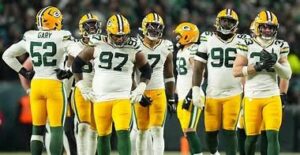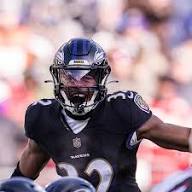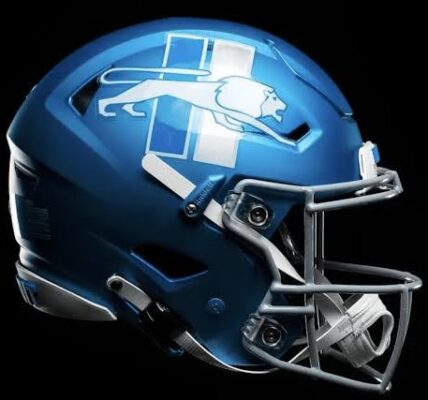These nine Detroit Lions players, under contract in 2025, could potentially be released to create salary cap space.

While the Detroit Lions have a considerable group of pending free agents, there’s a chance a player or two might have their current contracts terminated before they secure a new deal.
Salary cap casualties are an inevitable part of every offseason. Although the salary cap grows annually, so too do player contracts.
This often results in some older contracts being cut in favor of freeing up money to be better allocated elsewhere.
The Lions have a strong roster with over $50 million in cap space heading into 2025, meaning massive roster changes aren’t required for Brad Holmes and the front office.
That said, every dollar counts, and there are opportunities to part ways with underperforming contracts.
Before delving into which players might be on the chopping block, it’s important to highlight the high-value contracts that are not going anywhere. Quarterback Jared Goff has the highest cap hit on the roster at over $32 million in 2025.
Despite a lackluster playoff performance against the Washington Commanders, Goff’s future with Detroit is secure. The same goes for other contracts exceeding $10 million.
Offensive linemen Taylor Decker and Frank Ragnow are key pieces, and unless there’s a surprising retirement, they are staying for 2025.
Amon-Ra St. Brown and Aidan Hutchinson are also locks for the team.
Hutchinson will likely sign a significant extension soon, possibly lowering his 2025 cap hit. The only other player on this list is DJ Reader, whose cap savings would amount to nearly $8 million.
However, considering his value to the team’s front seven and the lack of depth at defensive tackle, cutting him would be a shock.
Now, let’s focus on players with significant cap hits (per Over The Cap) whose age, performance, or contracts may make them more likely to be released.
For clarity, I’ll be considering pre-June 1 cuts, meaning the player’s entire dead cap would apply in 2025; post-June 1 cuts would spread the dead cap over both 2025 and 2026.
Traded midseason for draft picks, Smith contributed a much-needed pass rush to the defensive line, but it wasn’t enough to carry the team past the playoffs.
The Lions are now responsible for the Cleveland Browns’ extension from the previous March. Smith’s contract, due to the trade, is complicated.
The Lions can avoid any dead cap hit if they release him before March 15 (the third day of the new league year).
After March 15, a $2 million signing bonus from his Browns contract kicks in, making it costly to cut him after this date.
Additionally, Smith has four years of prorated option bonuses, three of which are void years, amounting to $1.75 million per year. These bonuses must be paid just before the 2025 season, and if Smith is on the roster in September, the Lions would owe $6.9 million in option bonuses.
Although Smith technically has one year left on his contract, with a 2026 cap hit of over $5 million, it’s not ideal for the Lions to keep him on this deal. To avoid the signing bonus and prorated option bonuses, the best move would be to release him before March 15.
Another option for Smith would be a contract restructure or cutting him and then re-signing him.
In 2024, the Lions had an exceptional offensive line, with free-agent acquisition Kevin Zeitler excelling at right guard, alongside Taylor Decker, Frank Ragnow, and Penei Sewell. Glasgow, however, became the odd man out as his performance declined.
With rookie Christian Mahogany showing promise, Glasgow finished as possibly the sixth-best lineman on the team.
The Lions signed Glasgow to a three-year, $20 million deal in March after his strong 2023 return to Detroit, but his 2024 performance wasn’t up to par.
As he approaches his age-33 season, it’s likely that Glasgow is in the latter stage of his career. Cutting him would result in a $5.3 million dead cap hit, but it would save around $2 million on a declining player.
The argument for keeping Glasgow is twofold. He’s still valuable depth, capable of playing both guard positions and center, which makes him an ideal backup.
Additionally, Zeitler is a pending free agent, and cutting Glasgow could mean both guard spots need replacement. Mahogany appears ready to start, but Zeitler’s departure would create another hole.
Unless the Lions have a plan for replacing Glasgow, they should keep him and allow him to compete for a starting role alongside Mahogany, a free agent, or a rookie.
I believe the Lions will retain Glasgow, potentially restructuring his deal, but he isn’t guaranteed a starting spot next season.
Reeves-Maybin had a standout 2023 season as a special teams All-Pro, but 2024 was much more challenging.
He missed multiple weeks due to a neck injury and finished the season without any special teams tackles, which is typically his strength.
The Lions punted just 46 times in 2024, and the new kickoff format likely contributed to his decline.
His limited defensive snaps weren’t much better, as he was clearly a depth option behind Alex Anzalone, Jack Campbell, Malcolm Rodriguez, and free-agent Derrick Barnes.
Reeves-Maybin is highly regarded for his special teams contributions, but his age (turning 30) and the lack of special teams production last season could lead to his release.
The Lions have better options, such as Rodriguez, who is already under contract, and Barnes, who may re-sign.
Additionally, cheaper depth players like Trevor Nowaske, Anthony Pittman, and Ben Niemann could replace him.
A year ago, Raymond was nearly untouchable, but his contract and performance in 2024 could put him in a difficult position.
The two-time All-Pro returner, who had been a key contributor on offense, had his worst offensive season with just 215 receiving yards in 12 games.
His injury, combined with a declining role in the offense, makes his $6 million-plus contract hard to justify.
While Raymond still had a league-leading 413 yards in punt returns and a touchdown, the Lions may question whether paying him for return duties alone is worth it.
They have few alternatives on the roster, with Amon-Ra St. Brown, Tom Kennedy, and Maurice Alexander filling in while Raymond was injured.
St. Brown is too valuable as a starter to risk on special teams, Kennedy has limited return experience, and Alexander, though talented, has no offensive role.
Unless the Lions make bold moves, Raymond is likely to stay on the roster.
The Lions have a couple of defensive starters with intriguing cap savings opportunities, potentially freeing up around $4.8 million in space.
Jack Campbell is viewed as the future leader of the linebacker corps, and Ennis Rakestraw has the potential to develop into a solid cornerback, either outside or in the nickel role.
That said, cutting Anzalone or Robertson is a poor move. Defensive depth proved vital in 2024, especially when the Lions lost Derrick Barnes, forcing Campbell into a larger role.
Anzalone had a strong season, and it’s better to keep him for depth than to risk losing another starter.
As for Robertson, he was a quietly effective player for Detroit, and his contract provides excellent value. Cutting him in favor of an unproven player like Rakestraw is a risky move.
The Lions need to improve, not downgrade, their defense, which makes saving a few million dollars by cutting Anzalone or Robertson an unnecessary risk.
Paschal played a key role in the Lions’ defensive line after injuries depleted the unit, finishing the season with the most snaps among edge defenders. However, his production was modest, with just two sacks in the starting role.
While he wasn’t spectacular, he was effective in key moments, helping secure important victories.
Still, Paschal may not be part of the long-term plan, especially with the need for upgrades in the defensive line. That said, cutting him seems unlikely.
He provides valuable depth with versatility, capable of playing both inside and outside. The Lions were thin along the defensive line, and Paschal can fill in when needed.
Releasing him could lead to a lack of quality depth, and retaining him ensures a reliable backup for the defense.
It’s unlikely the Lions cut Paschal, given his importance to the team’s depth.
Lastly, I’m grouping these two together as they both came to the Lions in the 2023 draft as third-round picks. Neither has shown much in the NFL so far.
Hooker has been a backup throughout his career and was demoted to third-string for the playoff game, while Martin was often inactive, falling behind players like Myles Adams and Chris Smith on the depth chart.
Cutting them to save a few million is likely to be seen as penny-pinching, which is not something the Lions would typically do.
They were drafted for their potential, and it’s too early to give up on them. The Lions’ history under Brad Holmes shows a preference for giving players time to develop.
Unless a more urgent need for cap space arises, they’re more likely to keep these players and give them another year to develop, rather than cutting them for a small saving.


